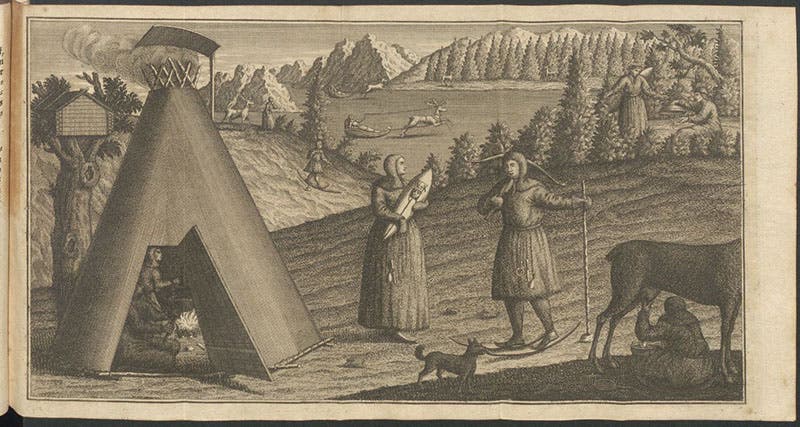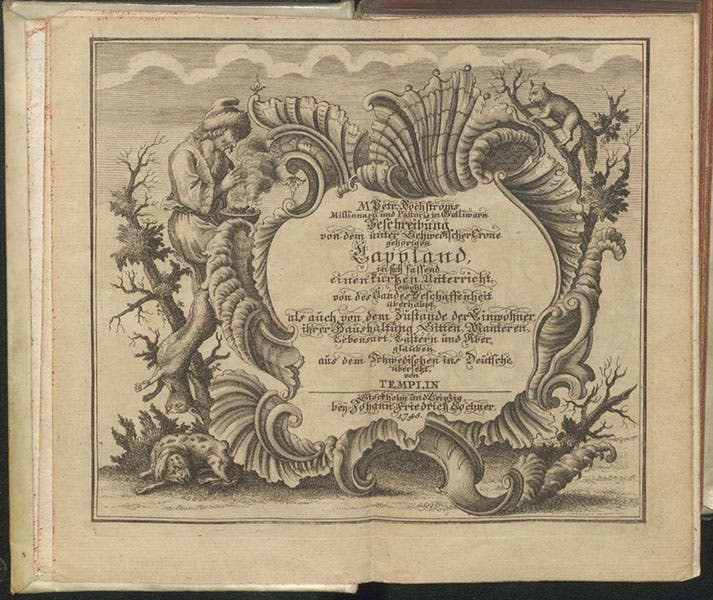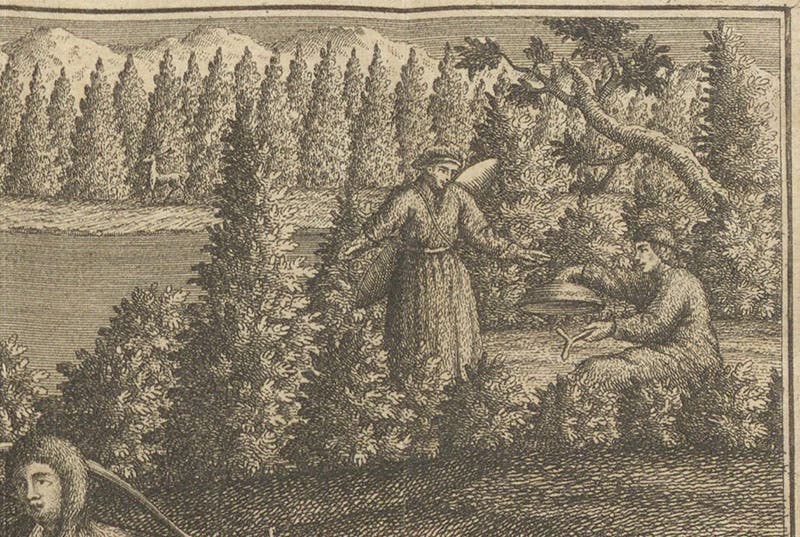Scientist of the Day - Pehr Högström
Pehr Högström, a Swedish clergyman, traveler, missionary, and linguist, was born Nov. 10, 1714, in what looks to be central Sweden, but is called Northern Sweden, along the coast of the Gulf of Bothnia. He studied philosophy in Uppsala. I do not know if he encountered Carl Linnaeus, who was teaching there at that time; if he did, he was not persuaded to take up the study of botany. Högström instead was interested in missionary work in what was then called Lappmarken, the land of the Sami peoples in north Sweden. He was especially eager to develop a written script for the Sami language, at which he was successful, so that the first Sami Bible was eventually printed in his devised script. He also worked to help educate the Sami, and convert them to Lutheranism, and translate things like hymns and psalters into Sami. What the Sami who did not convert to Christianity thought of him, I do not know; they were probably less enthusiastic about his career goals.
So Högström was not really a scientist. We include him here, because, a): he wrote a book on his initial travels in Lappmarken, called Description of the Regions of the Swedish Crown called Lappmarken, originally published in Swedish (1747), and which we have in our collections in a German translation of 1748, and because, b): his book contains a wonderful folding etched and engraved plate that depicts various aspects of Sami culture, a plate that I have never seen reproduced anywhere. The engraving technique is wooden and unimpressive, but the iconography is wonderful. We include the full plate as our first image, and then three details so you can better see what is going on.
At bottom center and right (fourth image), we see a Sami couple, the man with bow and skis, and the woman with her infant, in an interesting enclosed cradleboard that probably has a Sami name, while a third individual milks a reindeer. I include a detail of the top right (fifth image) because I do not know what is going on there, with the man on the right holding what seems to be the top of a soup tureen (and certainly is not), while in his other hand he has an odd three-pointed star-like object. If anyone can identify these objects and their purposes, please let me know.
The most interesting detail is at top center, where we see two pulkas, small sleds, being pulled by reindeer (sixth image). We have shown a similar scene once before, in our post on Abbé Réginald Outhier, in whose book is an engraving of a reindeer-with-pulka in a more wintry scene, an illustration that we once used for the Library’s holiday card.
Our copy of Högström’s Beschreibung is bound up with six other contemporary treatises on Swedish history in what is called a sammelband. Ours is bound in cream-colored vellum and has the title of Högström’s book written in ink on the spine (seventh image). We have quite a few sammelbands in our collections and have featured some of these in posts on William Watson, John Wallis, Jean-Baptiste Morin, and just last month, Stefano degli Angeli.
William B. Ashworth, Jr., Consultant for the History of Science, Linda Hall Library and Associate Professor emeritus, Department of History, University of Missouri-Kansas City. Comments or corrections are welcome; please direct to ashworthw@umkc.edu.













